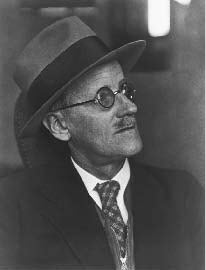| By Sarah Robertson |
James Joyce’s Ulysses celebrates its 100th birthday this year. Considered one of the greatest works of literature, this groundbreaking novel was published in its entirety in 1922, sparking the beginnings of modernism in literature. On Bloomsday, which takes place on June 16 each year to honor the life of James Joyce, we invite you to read Gale’s coverage of Ulysses in volume 26 of Novels for Students.
Ulysses is set on a single day, June 16, 1904, in Dublin, Ireland, and features the character Leopold Bloom. Through 18 episodes, Ulysses structurally parallels the Odyssey, Homer’s epic poem that chronicles mythological events of ancient Greece. The everyday life experience of Joyce’s protagonist, Bloom, corresponds to the journey Ulysses took after the Trojan War. Other characters in the book, such as Bloom’s wife, Molly, and Stephen Dedalus, represent the characters of Penelope and Telemachus in the Odyssey.
The book also incorporates the historical context of early twentieth-century Ireland, providing a vivid snapshot of life in Dublin at a time when Irish nationalism was a growing concern. Political figures, such as Charles Stewart Parnell, who advocated for Irish independence from Great Britain, strongly influence the motivations of Dedalus. Since the novel is set on June 16, 1904, Bloomsday celebrated a literary centennial on June 16, 2004. This year’s centennial is in celebration of the novel’s publication.
In its use of stream of consciousness, unusual structure, humor, and interior monologue, Ulysses employs many of the hallmarks of literary modernism. Joyce’s intention in writing Ulysses was to use prose to explore the inner thoughts of the human mind. The results are well-rounded characterizations and rich portrayals of the psyche. Though Ulysses may initially appear structurally disorganized and chaotic, Joyce does this intentionally to mimic the bedlam of human thought and the loneliness that results from being a captive of the mind. By accessing the inner workings of Bloom, Molly, and Dedalus, readers experience a myriad of human joys, anxieties, and traumas. While little action takes place over the 19 hours the book covers, Joyce’s depiction of the banality of existence is undeniably trailblazing.
Adding to the novel’s renown, a U.S. district court decided in 1933 that Ulysses was a work of art that was not subject to obscenity charges brought against those wanting to publish and distribute it in the United States. The rationale for the verdict was that the perceived obscene content wasn’t intended to appeal to lustful urges. The Supreme Court declined to further review the case, letting the district court decision stand. The publicity associated with the case further cemented Joyce’s fame internationally. The case still stands as a landmark for First Amendment rights in the United States. Ulysses challenged critics of the time, in part because of the presumed obscenity, but it has stood the test of time.
In addition to Ulysses, Joyce wrote short stories that were published in his 1914 collection, Dubliners, several of which are covered in the Short Stories for Students series (“Araby,” vol. 1; “The Dead,” vol. 6; “Eveline,” vol. 19; and “The Sisters,” vol. 32). His earlier novel, A Portrait of the Artist as a Young Man, was published in 1916 and is covered in Novels for Students, vol. 7.
The legacy of Ulysses can’t be understated. It is considered a masterpiece and a landmark of modernism. Ulysses challenged literary conventions, experimented with language, and ultimately gave birth to an innovative style. Reading Ulysses is as rewarding today as it was 100 years ago, and we encourage readers to enjoy the novel and honor James Joyce this Bloomsday with For Students!
Meet the Author
Sarah Robertson is a writer, editor, and longtime contributor to For Students.


